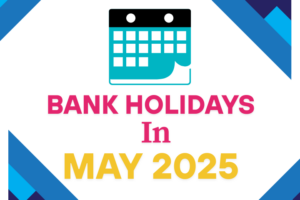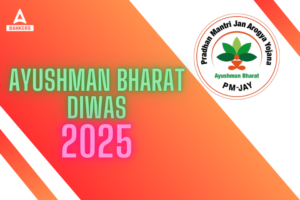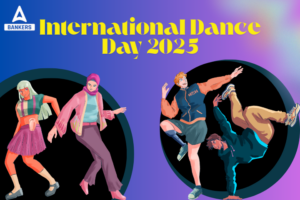On May 1 every year, the world observes International Labour Day, also known as International Workers Day or May Day. This day is dedicated to honouring the invaluable contributions of workers in building and sustaining our societies. Understanding the significance of this day is especially important for aspirants of banking and other government exams. This article covers everything candidates need to know about International Labour Day 2025.
International Labour Day 2025 Date
International Labour Day 2025 is being observed on Thursday, May 1, 2025, celebrating the spirit and strength of workers across the globe. From community events to educational workshops, people everywhere are engaging in activities that remind us the importance of fair labor practices and workers rights.
International Labour Day 2025 Theme
Each year, the International Labour Organization (ILO) and national organizations announce a theme that highlights a critical issue affecting the global workforce. The theme for 2025 is “Safety and Health of Workers”, emphasizing the need to strengthen workplace safety standards and promote the physical and mental well-being of employees.
- 2025 Theme: Safety and Health of Workers
- 2024 Theme: Ensuring Safety and Health at Work in a Changing Climate
- 2023 Theme: A safe and healthy working environment as a fundamental principle and right at work
- 2022 Theme: Universal Social Protection to End Child Labor
- 2020 Theme: Maintaining safety and security at the workplace
- 2019 Theme: Uniting Workers for Social and Economic Advancement
International Labour Day History
The history of International Labour Day has its roots in the labour movement of the late 1800s. The date was chosen in the remembrance of Haymarket Affair of 1886 in Chicago, where a peaceful nationwide strike by around 200,000 U. S. workmen for an eight-hour day turned violent after a bomb exploded, leading to the deaths and injuries of several people.
In 1889, the Second International held its first meeting in Paris, where Raymond Lavigne proposed international demonstrations to mark the anniversary of the 1886 Chicago protests. As a result, large demonstrations took place on May 1, 1890, across the United States, Europe, Chile, and Peru. A year later, in 1891, May 1 was officially recognized as International Workers Day, to be observed annually in support of workers rights.
Labour Day History in India
In India, Labour Day was celebrated for the first time on May 1, 1923, in Chennai (then Madras). It was organized by the Labour Kisan Party of Hindustan, led by Comrade Singaravelar. This event marked the start of the organized labour movement in India. May 1 is also observed as Maharashtra Day and Gujarat Day, commemorating the creation of the two states in 1960.
Important Labour Rights and Articles to Remember
Aspirants must keep the articles and rights listed below:
- Article 14: Ensures equality before the law, prohibiting discrimination in employment.
- Article 15: Prohibits discrimination on grounds of religion, race, caste, sex, or place of birth.
- Article 16: Guarantees equal opportunity in public employment.
- Article 19(1)(c): Grants the right to form associations or unions, empowering workers to organize collectively.
- Article 23: Prohibits human trafficking and forced labour.
- Article 24: Forbids the employment of children below the age of 14 in factories, mines, or hazardous occupations.
- Article 38: Mandates the state to promote the welfare of the people by securing a social order permeated by justice.
- Article 39: Directs the state to ensure that citizens have the right to adequate means of livelihood and that there is equal pay for equal work for both men and women.
- Article 41: Calls for the state to secure the right to work, education, and public assistance in cases of unemployment, old age, sickness, and disablement.
- Article 42: The government should ensure safe and fair working conditions and provide maternity benefits to women workers.
- Article 43: Encourages the state to secure a living wage and decent working conditions for all workers.
- Article 43A: Inserted by the 42nd Amendment in 1976, it emphasizes the participation of workers in the management of industries.
Labour Laws
Labour laws in India are made to protect the rights of workers and ensure they have fair, safe, and healthy working conditions. The Constitution of India also supports workers’ dignity through certain guiding principles that promote fairness and equality. To make things simpler and more organized, the government has combined 29 older labour laws into four main codes:
- Code on Wages, 2019: This code covers rules about how wages are paid, sets minimum wages, ensures fair bonuses, and promotes equal pay for all.
- Industrial Relations Code, 2020: This code focuses on the relationship between workers and employers. It includes rules about trade unions, solving disputes, and how companies can handle layoffs.
- Occupational Safety, Health and Working Conditions Code, 2020: This code ensures that workplaces are safe and healthy, and that workers get proper facilities and welfare support.
- Code on Social Security, 2020: This code provides benefits like provident fund (PF), employee insurance, gratuity, and maternity leave, even for workers in unorganized jobs.
ILO Conventions Ratified By India
India has ratified several key International Labour Organization (ILO) conventions, including:
- Convention No. 138: Sets the minimum age for employment, aiming to abolish child labour.
- Convention No. 182: Targets the elimination of the worst forms of child labour.
Government Initiatives for Workers
To address the needs of workers in India, the government of India has launched several schemes:
- e-Shram Portal: A national platform created to register unorganised workers and give them a unique ID (UAN) to help them access government welfare benefits.
- Pradhan Mantri Shram Yogi Maandhan (PM-SYM): A pension plan for unorganised sector workers, offering ₹3,000 per month after they turn 60.
- MGNREGA (Mahatma Gandhi National Rural Employment Guarantee Act): A scheme that promises at least 100 days of paid work each year to rural families.
International Labour Day 2025 Significance
Workers are the driving force behind economic growth and social development. Whether in manufacturing, education, transportation, or technology, their contribution supports every aspect of daily life. Labour Day 2025 or Workers Day 2025 not only celebrates this hard work but also reminds us of the continuous journey toward fairness and dignity at work.
- Upholding Workers Dignity: Labour Day reinforces the idea that every job deserves respect, and every worker deserves fair treatment, regardless of their industry or role.
- Honouring Labour Movements: It remembers the historical struggles that won us the eight-hour workday, minimum wage laws, and workplace safety standards.
- Addressing Today’s Workforce Challenges: With rapid changes in technology, the rise of gig work, and increasing job insecurity, Labour Day 2025 also brings attention to the urgent need for updated labour protections and inclusive growth.
- Inspiring Social and Economic Reform: The day encourages policymakers, businesses, and communities to create systems that protect workers rights, reduce inequality, and ensure decent work for everyone.
- Promoting Unity Across Borders: International Labour Day symbolizes worker solidarity across nations, standing for shared rights, goals, and a better future for all.
| Related Posts | |
| Ayushman Bharat Diwas 2025 | Important Days and Dates in 2025 |
| Important Days in May 2025 | Bank Holidays in May 2025 |




 Bank Holidays in May 2025, Will Bank be ...
Bank Holidays in May 2025, Will Bank be ...
 Ayushman Bharat Diwas 2025, Date, Theme ...
Ayushman Bharat Diwas 2025, Date, Theme ...
 International Dance Day 2025, History, S...
International Dance Day 2025, History, S...







